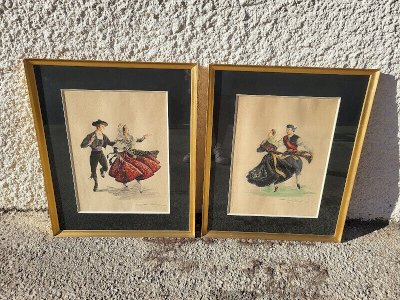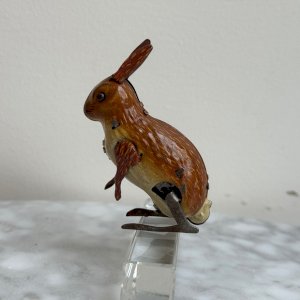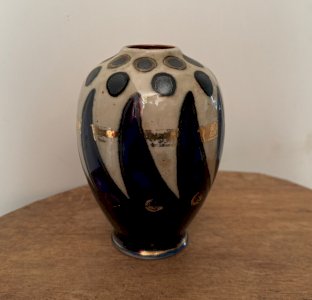- Sell Now
- Home
-
FURNISH
All STORAGE FURNITURE • Wardrobe • Chests of drawers, Chiffonnier • Sideboard • Shelves, Bookshelves • File cabinet • Sewing Furniture • Bar cabinet • TV Stand • Trunk, Chest TABLE & BEDSIDE TABLE • Dinner Table • Coffee table, side table, end table & Bedside • Console, Pedestal table & Selette • Serving Table, Trolley • Card Table • Draper's counter & table SEAT • Sofa • Armchair • Chair • Stool • Bench • Daybed • Beanbag & Footrest • Deckchair & Outdoor DESK, SECRETARY, DRESSING TABLE GARDEN LOUNGE BEDDING • Bed • Bedhead • Cradle, Moses basket CRAFT FURNITURE, WORKSHOP • Workbench • Stool, Ladder, Step • Easel & Trestle SCREEN PIANO
-
DECORATE
All TO PUT • Sculpture, Statuette • Vase & Planter • Dame Jeanne, Bonbonne & Flacon • Bridal globe, Dome • Pin tray, Ashtray • Candlestick & Candle • Photo frame • Stone, Fossil, Mineral • Earth Globe MIRROR WALL DECORATION • Painting • Engraving & Illustration • Poster • Tapestry • Wall Frame • Plate & Sign • Juju Hat & Wall Paniel • Mask • Hunting Trophy • Other object to hang CLOCK, PENDULUM & ALARM CLOCK ARRANGEMENT • Jar, Box & Case • Basket, Wastebasket & Crates • Magazine Rack & Vinyl Holder • Display & Spinner • Coat hook & Coat rack • Furniture Valet & Mannequin • Towel Holder • Suitcase & Travel Bag • Bottle Rack • Umbrella holder BATHROOM OFFICE • Mail holder • Bookends • Sulphide & Paperweight • Stationery FIREPLACE ACCESSORIES HOBBIES • Vintage Sport • Music • Vintage device • Smoking Item • Militaria, Ancient weapon • Miniature Vehicle • Game, Playing Cards • Collection object & Curiosity BIRD CAGE RELIGION, SPIRITUALITY
- TEXTURE
- ILLUMINATE
-
ACCOMODATE
All TABLE & SERVING • Plate • Silverware • Knife Holder • Glass • Bowl, Mug, Cup • Bowl, Ramekin & Cup • Dish, Cup & Salad Bowl • Tray, Basket & Server • Table Mat • Pitcher, Carafe, Bottle, Tea & Coffee Jug • Ice Bucket • Salt & Pepper shakers, Oil & Vinegar shakers • Sugar and jam maker • Gravy boat • Butter dish • Egg cup • Terrine OLD BALANCE CUTTING BOARD GRINDER CASSEROLE, SAUCEPAN & PAN KITCHEN UTENSIL & ACCESSORY
- TINKER
- KIDS
- Jewelry & Accessories
Login
Related Products
Description
LOUIS TOFFOLI LITHOGRAPHY IN THE FOREST AGAINST SIGN NUMBER 56 ON 125 B3030Lithography by Louis TOFFOLI "in the forest" countersigned and numbered 56/125 in aluminum frame. This lithograph was produced by Toffoli. It is an authorized lithograph, controlled with the signature Toffoli and the title written by Toffoli: In the forest, plus the print 56 / 125.It is in superb condition. Presence of scotch on the back.Louis Toffoli is a French painter born in Trieste (Italy), on October 16, 1907, of an Italian father and a Slovenian mother, and died on February 18, 1999 in Paris.Successively Austro-Hungarian, then Italian then French, therefore European before the letter, Toffoli declared himself as “from Trieste” and did not sign his paintings neither Luigi nor Louis, but only Toffoli. On May 20, 1915, Italy declared war on Austria. Trieste is an Austro-Hungarian Adriatic port and the family is forced into exile in Italy. He is eight. In Padua, then in Florence, Luigi discovered arts of religious or secular inspiration.In 1924, Luigi Toffoli entered the Naval School of Trieste but difficulties forced him to give up studies. He worked as a blacksmith then a tailor and took evening classes at the Académie des Beaux-Arts triestine. At the Trieste Biennale in 1928, among Chirico and other well-known artists, Luigi Toffoli presents two constructivist style canvases. Those responsible for fascist propaganda are closely interested in the singular vision of the young artist. The Black Shirts urge him to get involved with them. He must organize his escape (at the time of the fascist, totalitarian regime, Italian nationals were forbidden to leave the national territory) In 1930, Luigi Toffoli took the opportunity of an organized trip to emigrate to Paris. Without proper paper or money, he lives in the Goutte d'Or district, rue Myrha, where his future wife Sylvia, who died in 1973, joined him. They will have two sons Patrick and Claude. They live on expedients until Denis Kalman, a renowned couturier from the Faubourg Saint-Honoré, hires him in his workshop. His situation is regularized, his talents as a model maker are recognized. He obtained a tradesman's card and taught the art of cutting at the Chambre Syndicale du Garment. His reputation grew in 1934; numerous orders allowed him to settle in Alfortville then in Charenton-le-Pont. He became an independent craftsman for Parisian fashion houses. He again took drawing lessons, patiently experimented with his style and tried his hand at poster technique.In 1935, a competition was opened by the Ministry of the Colonies on the occasion of the tercentenary of the attachment of the West Indies to France. . Its composition obtains the first prize. Shortly after, Luigi Toffoli received the second prize in an international competition organized by the League of Nations. It was also the time of the first exhibitions in the main salons: Salon d'Automne, Salon des Indépendants, Salon des Peintres Témoins de leur Temps, Musée de la Marine… The economic crisis of 1936, public scandals and strikes led the Popular Front in government. He sometimes attends political meetings where he portrayed Blum, Taittinger, Auriol and other figures of the time.During the occupation, in order to escape the compulsory labor service, Luigi Toffoli took refuge in Touraine, in Jaulnay, where he participated as a liaison with the Resistance. He now presents himself as a painter, exhibiting at the Salon des Indépendants paintings inspired by the world of work, one of the strong themes of his work. In 1947, Luigi Toffoli obtained French naturalization and became Louis Toffoli. The RG gallery in Paris organized in 1952 for Louis Toffoli his first personal exhibition. From now on, exhibitions and trips abroad will multiply. In 1954, Louis Toffoli learned the technique of lithography in the workshops of Fernand Mourlot, then from 1968, he continued to publish lithographs in those of Jean-Claude Perrin. Lithography popularized his painting.These were also the years when he exhibited at the Suillerot gallery alongside Maurice Boitel, Robert Savary, Noe Canjura, Daniel du Janerand, Ginette Rapp and Eliane Thiollier. Several photographs from February 1955 by Georges Papo represent them surrounding the gallery owner Raymond Suillerot.In 1956, he explored Spain and then Yugoslavia by train and by bike, off the tourist trails, and sketching the locals, in search of humanity. . Back in Charenton-le-Pont, he exhibited once again at the Salon des Peintres Témoins de leur Temps. His talent was noticed by a Brazilian patron in 1960 who invited him to exhibit at the Copacabana Palace, in Brazil.For the state, please detail the photos.The photos are an integral part of the description.Frame dimensions: Height: 53.3 cmWidth : 67.5 cm Thickness: 1 cm Dimensions of the litho in the frame (view): Height: 49 cm Width: 63 cm Dimensions of the litho without the frame (behind): Height: 50.2 cm Width: 64.3 cm I remain at your disposal for any questions.
Réf :
#16426
Comments
Related Products
Description
LOUIS TOFFOLI LITHOGRAPHY IN THE FOREST AGAINST SIGN NUMBER 56 ON 125 B3030Lithography by Louis TOFFOLI "in the forest" countersigned and numbered 56/125 in aluminum frame. This lithograph was produced by Toffoli. It is an authorized lithograph, controlled with the signature Toffoli and the title written by Toffoli: In the forest, plus the print 56 / 125.It is in superb condition. Presence of scotch on the back.Louis Toffoli is a French painter born in Trieste (Italy), on October 16, 1907, of an Italian father and a Slovenian mother, and died on February 18, 1999 in Paris.Successively Austro-Hungarian, then Italian then French, therefore European before the letter, Toffoli declared himself as “from Trieste” and did not sign his paintings neither Luigi nor Louis, but only Toffoli. On May 20, 1915, Italy declared war on Austria. Trieste is an Austro-Hungarian Adriatic port and the family is forced into exile in Italy. He is eight. In Padua, then in Florence, Luigi discovered arts of religious or secular inspiration.In 1924, Luigi Toffoli entered the Naval School of Trieste but difficulties forced him to give up studies. He worked as a blacksmith then a tailor and took evening classes at the Académie des Beaux-Arts triestine. At the Trieste Biennale in 1928, among Chirico and other well-known artists, Luigi Toffoli presents two constructivist style canvases. Those responsible for fascist propaganda are closely interested in the singular vision of the young artist. The Black Shirts urge him to get involved with them. He must organize his escape (at the time of the fascist, totalitarian regime, Italian nationals were forbidden to leave the national territory) In 1930, Luigi Toffoli took the opportunity of an organized trip to emigrate to Paris. Without proper paper or money, he lives in the Goutte d'Or district, rue Myrha, where his future wife Sylvia, who died in 1973, joined him. They will have two sons Patrick and Claude. They live on expedients until Denis Kalman, a renowned couturier from the Faubourg Saint-Honoré, hires him in his workshop. His situation is regularized, his talents as a model maker are recognized. He obtained a tradesman's card and taught the art of cutting at the Chambre Syndicale du Garment. His reputation grew in 1934; numerous orders allowed him to settle in Alfortville then in Charenton-le-Pont. He became an independent craftsman for Parisian fashion houses. He again took drawing lessons, patiently experimented with his style and tried his hand at poster technique.In 1935, a competition was opened by the Ministry of the Colonies on the occasion of the tercentenary of the attachment of the West Indies to France. . Its composition obtains the first prize. Shortly after, Luigi Toffoli received the second prize in an international competition organized by the League of Nations. It was also the time of the first exhibitions in the main salons: Salon d'Automne, Salon des Indépendants, Salon des Peintres Témoins de leur Temps, Musée de la Marine… The economic crisis of 1936, public scandals and strikes led the Popular Front in government. He sometimes attends political meetings where he portrayed Blum, Taittinger, Auriol and other figures of the time.During the occupation, in order to escape the compulsory labor service, Luigi Toffoli took refuge in Touraine, in Jaulnay, where he participated as a liaison with the Resistance. He now presents himself as a painter, exhibiting at the Salon des Indépendants paintings inspired by the world of work, one of the strong themes of his work. In 1947, Luigi Toffoli obtained French naturalization and became Louis Toffoli. The RG gallery in Paris organized in 1952 for Louis Toffoli his first personal exhibition. From now on, exhibitions and trips abroad will multiply. In 1954, Louis Toffoli learned the technique of lithography in the workshops of Fernand Mourlot, then from 1968, he continued to publish lithographs in those of Jean-Claude Perrin. Lithography popularized his painting.These were also the years when he exhibited at the Suillerot gallery alongside Maurice Boitel, Robert Savary, Noe Canjura, Daniel du Janerand, Ginette Rapp and Eliane Thiollier. Several photographs from February 1955 by Georges Papo represent them surrounding the gallery owner Raymond Suillerot.In 1956, he explored Spain and then Yugoslavia by train and by bike, off the tourist trails, and sketching the locals, in search of humanity. . Back in Charenton-le-Pont, he exhibited once again at the Salon des Peintres Témoins de leur Temps. His talent was noticed by a Brazilian patron in 1960 who invited him to exhibit at the Copacabana Palace, in Brazil.For the state, please detail the photos.The photos are an integral part of the description.Frame dimensions: Height: 53.3 cmWidth : 67.5 cm Thickness: 1 cm Dimensions of the litho in the frame (view): Height: 49 cm Width: 63 cm Dimensions of the litho without the frame (behind): Height: 50.2 cm Width: 64.3 cm I remain at your disposal for any questions.
Réf :
#16426
 English
English  Français
Français 


























